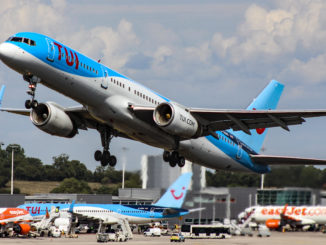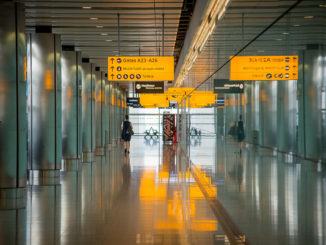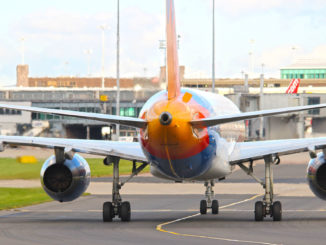
More than 67% of the global population actively uses the Internet, so it’s become an expectation that most public places provide fast broadband access. This includes spaces dedicated to air travel. For instance, in 2018, British Airways formally announced that high-speed onboard Wi-Fi services on long-haul flights were now available. With the rollout, passengers can now stream videos, check their emails, and perform a variety of other online tasks through their preferred devices.
That said, while planes seem to have adapted to the high-speed expectations of the digital era, airports are still trying to catch up. Generally, the UK’s broadband speeds average around 110.99 Mbps. This lags behind many other developed countries, including those in Western Europe, where speeds are faster by upwards of 27.48 Mbps. To address this a growing number of airports across the country are starting to invest in full fibre broadband solutions, although widespread adoptions are yet to be seen.
The current state of fibre broadband in the UK
Over the last several years, there has been a steadily increasing demand for full fibre broadband. As its name implies, full fibre broadband is a type of connection that uses fibre cables and light to transmit data. Because of this, speeds are much faster and less likely to experience interruptions. As of June 2024, providers like Virgin Media and Sky are partly responsible for a 68% jump in full fibre broadband coverage. Outside of just homes, though, businesses are also embracing fibre connections, given that slower speeds have been found to cost up to £28 billion in total annual revenue. Nowadays, full fibre business broadband is a valuable investment because it can provide reliable gigafast speeds without any limits. The packages from the broadband provider Zzoomm provide businesses with connectivity perks like a dedicated connection and cutting-edge Wi-Fi 6 routers. Consequently, online traffic is more secure, and service is not shared and strained across others in the same network. Such features ensure that businesses can keep up with internal and external responsibilities. That said, it’s no surprise that more local airports are also making the jump to full fibre.
How fibre broadband is reshaping airports
But just how can full fibre broadband specifically help airports? For one, it can help improve and modernise overall services. To illustrate, broadband operator Wildanet recently linked up with Cornwall Airport Newquay. With this, passengers can enjoy enhanced check-in processes and make the most of their time at the airport. Available in shared spaces, the broadband service is designed to help facilitate an entirely digital experience that reduces the use of paper. Given its convenience, the service also lets passengers entertain themselves with a variety of online activities, such as streaming, gaming, and more. In terms of the airport’s own offices and staff, the fibre connection is expected to help elevate productivity and sustainability. With these, airport officials have expressed that they believe this will help them with scalability and future-proofing.
In line with the above, having better full fibre at airports can also secure better customer satisfaction. When looking at recent airport ratings across the UK, the higher-rated ones boast solid Wi-Fi. Specifically, Liverpool John Lennon and London City Airport both received five-star ratings, with respondents citing their airport Wi-Fi as a valuable asset. Clinching passenger support is critical for airports because this ensures enough traffic is maintained for regular operations and can also drum up enough interest to secure future investments. Currently, while full fibre broadband is not yet the norm in airports, it’s clearly a necessary tool for passengers and operators alike.



